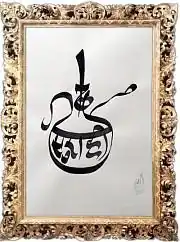Desi
Desi (/ˈdeɪsi, ˈdɛsi/; Hindustani: [d̪eːsi]) are the people, cultures, and products of the Indian subcontinent and their diaspora, derived from Sanskrit देश (deśá), meaning "land, country."[2] Although "desi" is sometimes viewed as a loose term, and countries that are considered "desi" are subjective, it is accepted that Desi traces its origin specifically to the countries of India, Pakistan and Bangladesh.[3][1] Additionally, the Maldives, Nepal, Bhutan, and Sri Lanka are often included in 'desi' countries.

Etymology
The ethnonym belongs in the endonymic category (i.e., it is a self-appellation). Desi is borrowed from the Hindustani desī (देसी, دیسی) 'national', ultimately from Sanskrit deśīya, derived from deśa (देश) 'region, province, country'.[4] The first known usage of the Sanskrit word is found in the Natya Shastra (~200 BCE), where it defines the regional varieties of folk performing arts, as opposed to the classical, pan-Indian margi. Thus, svadeśa (Sanskrit: स्वदेश) refers to one's own country or homeland, while paradeśa (Sanskrit: परदेश) refers to another's country or a foreign land.
History
While the original Sanskrit word meant 'country', with time its usage shifted more towards referring to people, cultures, and products of a specific region; for example, desi food, desi calendars, and desi dress.[5]
Desi contrasts with the Hindustani language word vilāyati (Anglicised as "Blighty"),[6] which originally referred only to Britain (during the British rule vilāyat, an Arabic-origin word meaning 'state', signified Britain) but may also refer more generally to anything that is European or Western. People from the subcontinent living in vilāyat (Britain) or in other Western countries refer to themselves and their ethnic culture as desi. The desi/vilāyati pair of antonyms is widely used in subcontinent languages (Hindi, Urdu, Punjabi, Bengali etc.).
After the passage of the Immigration and Nationality Act of 1965, the United States dramatically increased immigration from the subcontinent. As increasing numbers of students from the subcontinent arrived in the U.S. and UK, their countries of origin were colloquially referred to as deś. For example, all things Indian including Indian expatriates were referred to as "desi".
Culture


In the U.S., as in other countries, some diaspora desis are creating a "fusion" culture, in which foods, fashions, music, and the like from many areas of South Asia are "fused" both with each other and with elements from Western culture.[8] For example, urban desi is a genre of music formed by the fusion of traditional Indian and Western urban music.[9] The growing demand of popular programming for South Asians caused MTV to launch the desi-targeted television channel MTV Desi.
In the UK, desi communities have continued the fusion culture which first emerged during the rule of the British Raj, influencing music, art, fashion and food. There are now dedicated radio stations catering to British-South Asians such as the BBC Asian Network.
In Canada, desis have established sizable ethnic enclaves in areas such as Brampton, Ontario and Surrey, British Columbia.
Performing arts
The Natya Shastra refers to the regional varieties of folk dance and music elements as desi, and states that these are meant as pure entertainment for common people, while the pan-Indian margi elements are to spiritually enlighten the audience. The medieval developments of the classical Indian dance and music led to the introduction of desi gharanas, in addition to the classical gharanas codified in Natya Shastra. The desi gharanas further developed into the present-day adavus. There is raga in Indian classical music known as desi.
Food and drink
In regions of the Indian subcontinent, desi in the context of food, implies "native" or 'traditional". Common examples are "desi ghee", which is the traditional clarified butter used in the Indian subcontinent as opposed to more processed fats such as vegetable oils. "Desi chicken" may mean a native breed of chicken. This word is also usually restricted to Sanskrit-derived (Indo-Aryan) languages.
Heritage varieties of vegetables and other produce can also be qualified as "desi." "Desi diet" refers to a diet and food choices followed by Indians around the world. Desi daru refers to "country liquor", such as fenny, toddy and arrack. It is differentiated from Indian-made foreign liquor such as Indian-made whisky, rum, or vodka.
References
- Zimmer, Ben (27 September 2013). "Here She Comes, 'Desi' Miss America". The Wall Street Journal. Retrieved 12 October 2020.
But as South Asians have built up diasporic communities around the world, "desi" has traveled with them, used not as a put-down but as an expression of ethnic pride. Make that pan-ethnic: Anyone with heritage from the subcontinent— India, Pakistan or Bangladesh—can identify as a "desi" and partake in "desi" culture.
- Steinberg, Shirley R.; Kehler, Michael; Cornish, Lindsay (17 June 2010). Boy Culture: An Encyclopedia. ABC-CLIO. pp. 86–88. ISBN 978-0-313-35080-1. Retrieved 12 March 2012.
- "desi". OxfordDictionaries.com. Oxford University Press. 2016. Retrieved 12 October 2016.
- Sharma, Nitasha Tamar (17 August 2010). Hip Hop Desis: South Asian Americans, Blackness, and a Global Race Consciousness. Duke University Press. ISBN 978-0-8223-9289-7.
The lives of South Asians in America, or desis—a term meaning "of the land" from the Hindi/Urdu word desh, or country—are both historically constituted and circumscribed by global processes and the limitations of what is possible today.
- Mughal, M. A. Z. (2014-10-20). "Calendars Tell History: Social Rhythm and Social Change in Rural Pakistan" (PDF). History and Anthropology. 25 (5): 592–613. doi:10.1080/02757206.2014.930034. ISSN 0275-7206. S2CID 55668409.
- "blighty". Lexico UK Dictionary. Oxford University Press.
- Kazim, Shehrbano (14 May 2016). "Drawn from the same wellspring". The Express Tribune. Retrieved 12 October 2020.
- Kvetko, Peter (2002). When the East Is in the House: The Emergence of Dance Club Culture among Indian-American Youth (Thesis). University of Texas. Archived from the original on 18 May 2006. Retrieved 27 October 2016.
- Kurwa, Nishat (15 October 2008). "Urban Desi: A Genre on the Rise". All Things Considered. National Public Radio. Retrieved 27 October 2016 – via NPR.org.